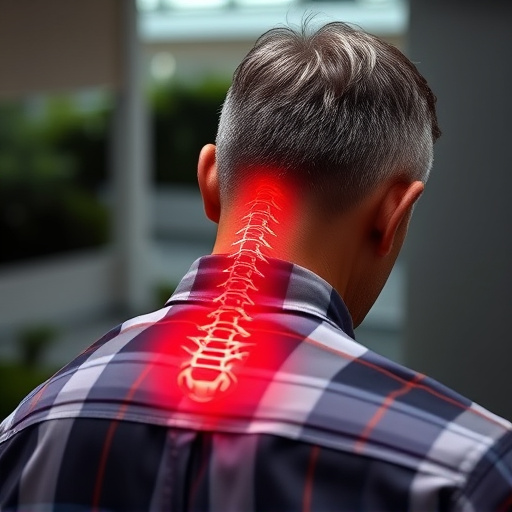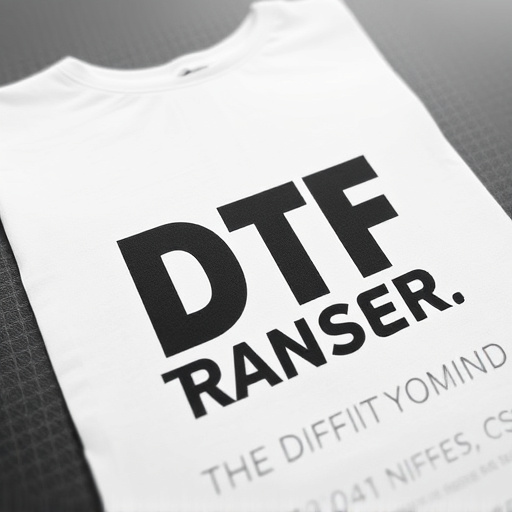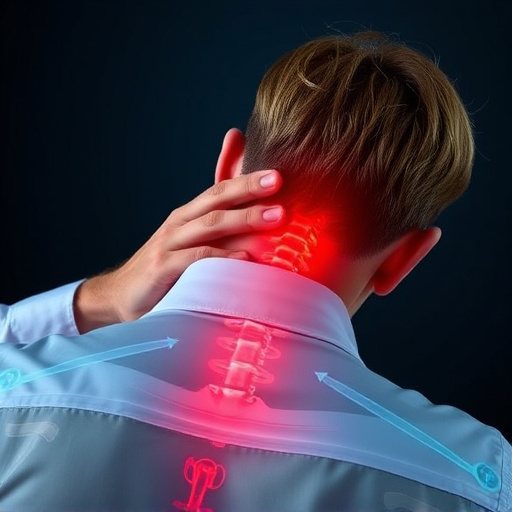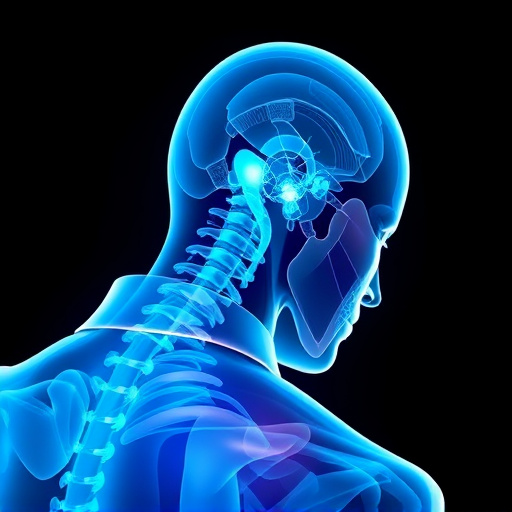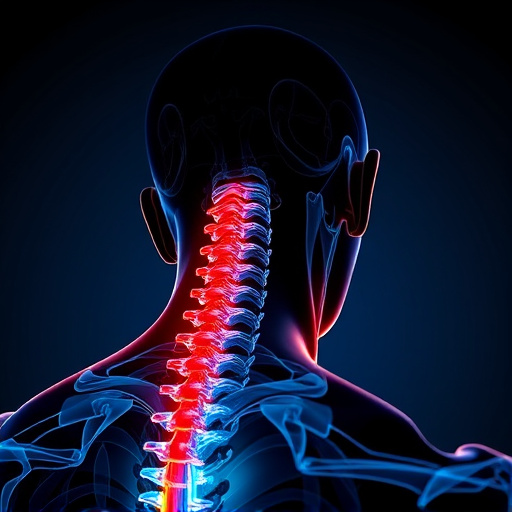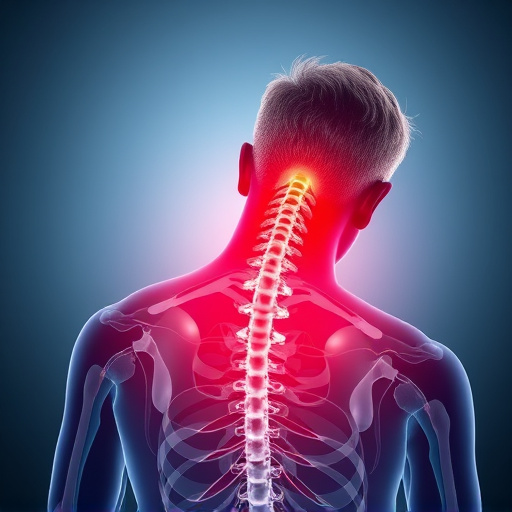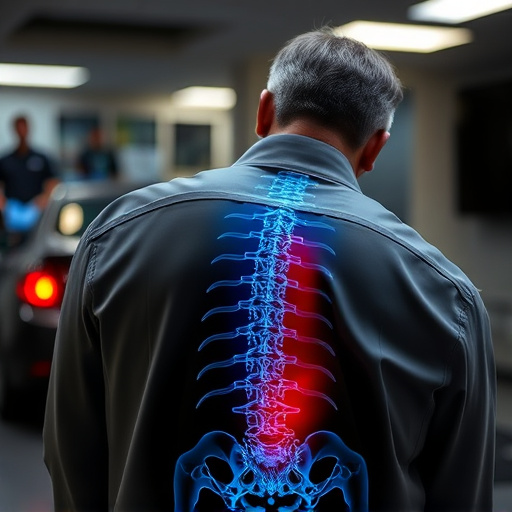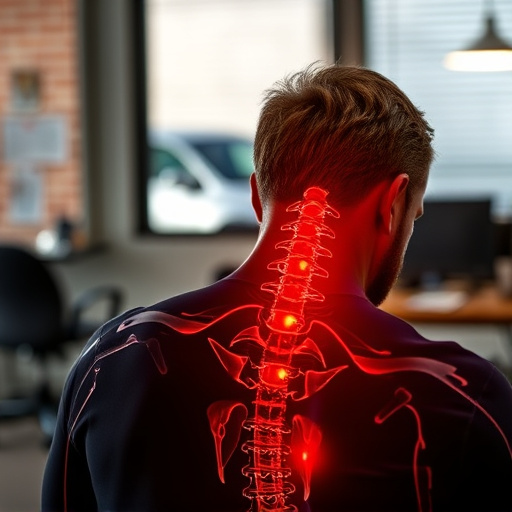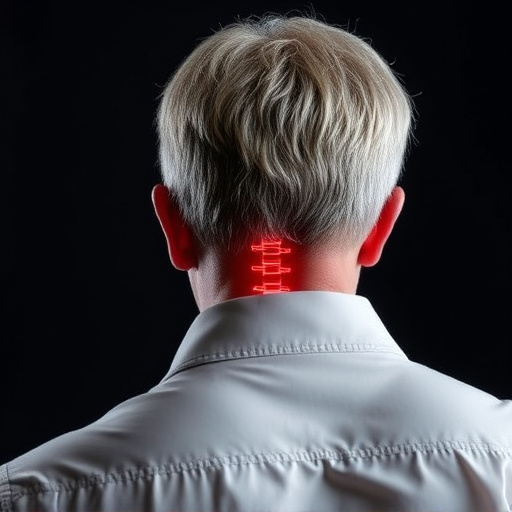Lower back and leg nerve pain, often caused by work-related injuries or spinal conditions like herniated discs, can significantly impact daily life. Specialized workers compensation injury care offers accurate diagnosis and tailored treatments, including physical therapy, medication, and interventional procedures, to alleviate symptoms and restore nerve function. Understanding your rights under workers compensation is vital for receiving necessary healthcare and financial support during recovery. Non-surgical methods like physical therapy, manual therapy, and nerve stimulation therapies are effective, with physical therapy being a key component for regaining mobility and preventing future injuries. Proactive measures such as maintaining good posture, regular breaks, staying active, and ergonomic workplace adjustments also help in long-term relief.
Tired of enduring lower back and leg nerve pain that affects your mobility? This comprehensive guide offers relief through a multi-faceted approach. We explore worker’s compensation and injury care rights, common causes of nerve compression in the lower extremities, non-surgical treatments, physical therapy, rehabilitation strategies, and preventive measures to avoid recurrence. Get ready to reclaim your active lifestyle.
- Understanding Lower Back and Leg Nerve Pain
- Workers Compensation and Injury Care: Your Rights
- Common Causes of Nerve Compression in the Lower Extremities
- Non-Surgical Treatment Options for Alleviating Nerve Pain
- Physical Therapy and Rehabilitation for Efficient Recovery
- Preventive Measures to Avoid Recurrence
Understanding Lower Back and Leg Nerve Pain

Lower back and leg nerve pain can significantly impact a person’s daily life, especially for those who suffer from prolonged or chronic conditions. This type of pain is often a result of compression or irritation of the nerves in the lower spine, which can stem from various causes such as injuries, degenerative disc disease, spinal stenosis, or even work-related injuries covered under workers compensation care.
Understanding the root cause is crucial for effective relief and management. Workers compensation injury care focuses on providing specialized treatment to individuals who have suffered workplace injuries, ensuring they receive proper diagnosis, rehabilitation, and support to alleviate nerve pain symptoms in the lower back and legs. This may include physical therapy, medication, or interventional procedures to restore nerve function and improve mobility.
Workers Compensation and Injury Care: Your Rights

If you’ve experienced a work-related injury, such as lower back or leg nerve pain, understanding your rights under Workers Compensation is crucial. In many jurisdictions, workers have the right to seek compensation and medical care for workplace injuries. This includes coverage for treatments aimed at alleviating pain, like physical therapy, medication, and in some cases, surgical interventions.
Workers Compensation provides a safety net for employees who face injuries or develop illnesses related to their jobs. It ensures access to necessary healthcare services and financial support during recovery. The process typically involves reporting the injury to your employer and filing a claim with the relevant Workers Compensation board. They will assess your case and guide you through the available options for treatment and compensation, ensuring your rights as an injured worker are protected.
Common Causes of Nerve Compression in the Lower Extremities

Nerve compression in the lower extremities, leading to pain in the legs and feet, can arise from various causes. One common scenario is repetitive strain or overuse injuries, often experienced by workers in physically demanding occupations who engage in activities that involve repeated bending, lifting, or prolonged standing. These actions can place pressure on the nerves, particularly in the lumbar region, causing irritation or compression.
Another significant factor is spinal misalignment or structural issues, such as a herniated disc or scoliosis, which can narrow the neural foramen and put pressure on the nerve roots. This condition may result from accidents, like car crashes or workers compensation injuries, leading to chronic pain and numbness radiating down the legs. Additionally, conditions like arthritis or bone spurs can also contribute to nerve compression, affecting mobility and causing persistent discomfort in the lower back and legs.
Non-Surgical Treatment Options for Alleviating Nerve Pain

Many individuals experiencing nerve pain in their lower back and legs seek non-surgical treatment options as a part of their workers compensation injury care. This is a wise approach, as surgery should always be a last resort. Various therapies can significantly alleviate this type of pain without the need for invasive procedures. Physical therapy is a commonly recommended option. Trained professionals can design specific exercises to strengthen muscles and improve posture, reducing pressure on affected nerves. Additionally, manual therapy techniques, such as chiropractic adjustments or massage, can offer relief by enhancing flexibility and mobility in the spine and surrounding areas.
Another effective method is nerve stimulation therapy, like electrical stimulation or ultrasound treatments. These non-invasive procedures promote healing and reduce inflammation while blocking pain signals to the brain. When combined with targeted exercises and lifestyle modifications, such as improving posture while sitting and standing, these treatments can provide lasting relief for those suffering from a workers compensation injury.
Physical Therapy and Rehabilitation for Efficient Recovery

Physical therapy plays a pivotal role in the recovery process for lower back and leg nerve pain, especially following a workers’ compensation injury. Skilled therapists employ a multifaceted approach tailored to address specific causes of discomfort, focusing on improving flexibility, strengthening supporting muscles, and enhancing overall mobility. Through targeted exercises, manual therapy, and educational guidance, patients can regain control over their movements, prevent future injuries, and achieve long-lasting relief.
Rehabilitation programs often incorporate progressive stretching routines, gentle yoga poses, and balanced strength training to nurture a safe return to daily activities and work duties. This holistic strategy not only speeds up the healing process but also empowers individuals with the knowledge and tools needed to maintain their well-being even after formal treatment concludes.
Preventive Measures to Avoid Recurrence

To prevent lower back and leg nerve pain from recurring, especially after a workers’ compensation injury, proactive measures are essential. Maintaining good posture while sitting or standing is crucial; this includes keeping your spine neutral and aligning your knees and hips at the same level as your hips. Regular breaks during prolonged periods of sitting or standing can help relieve pressure on the back and legs.
Additionally, staying active with appropriate exercises strengthens the muscles supporting your back and improves flexibility. Ergonomic workplace adjustments, such as adjustable desks or chair supports, can also play a significant role in preventing strain. Workers’ compensation care should include guidance on these preventive measures to ensure long-term relief and reduce the risk of future injuries.



